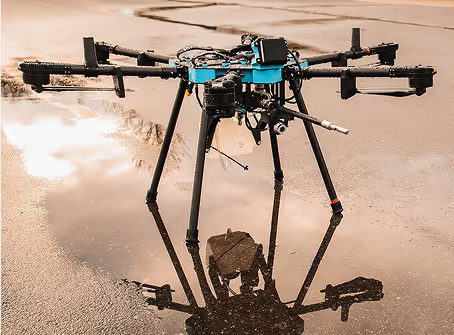
The “Big Beautiful Bill” Explained and Why 2025 Is the Smartest Year to Invest in Your Drone Fleet
Discover how the One Big Beautiful Bill Act (OBBBA) lets small businesses deduct 100% of drone equipment costs in 2025. Learn how investing in Lucid Bots’ Sherpa Drones this year can maximize your tax savings and boost your cleaning business growth.
If you’re running a small building-services or cleaning business, you’ve probably heard some buzz about the “One Big Beautiful Bill Act” (OBBBA).
You don’t need to be a tax expert to understand it. This bill is a big win for small business owners investing in equipment that helps them grow.
Here’s what it means in simple terms, and how it could save you thousands when you buy a Sherpa Drone before the end of 2025.
What the Big Beautiful Bill Does
According to EisnerAmper’s Contractor’s Cheat Sheet, the OBBBA makes several long-term updates to U.S. tax law designed to boost construction, maintenance, and building upgrades.
Here are the two most important changes for small business owners buying tools or equipment:
- Permanent 100% Bonus Depreciation
Contractors and building-services companies can now deduct the full cost of qualifying equipment immediately, starting January 2025.
That means if you buy a Lucid Bots Sherpa Drone, a Sherpa Drone and Tethered system, or our Lavo Bot and Sherpa Drone combo, you could potentially write off the entire amount this year and not spread it over 5 or 7 years like before.
EisnerAmper notes that this provision now applies to both new and used assets, and it’s permanent, so you get the deduction right away, improving your cash flow. - Expanded Section 179 Deduction
The OBBBA also raises the Section 179 deduction limit to $2.5 million, with a phase-out beginning at $4 million.
Section 179 lets small businesses deduct equipment purchases that are actively used for work. So this is your trucks, pressure washers, and yes even our drones.
As EisnerAmper’s Real Estate update explains, this expansion makes Section 179 far more powerful for smaller operators, especially those upgrading tools, vehicles, or building systems.
How This Works in Real Life
Let’s say you run a small exterior-cleaning or maintenance company and earned $300,000 in profit this year.
You decide to purchase a Lucid Sherpa Drone for $90,000 in November 2025.
If you qualify under Section 179 or 100% bonus depreciation, you can deduct that full $90,000 from your taxable income lowering your taxable earnings to $210,000.
That could translate to tens of thousands of dollars in tax savings, depending on your state and filing status.
Why Timing Matters
Many of these incentives like 100% bonus depreciation and the higher Section 179 limits are tied to equipment placed in service after January 2025.
But here’s the key:
Projects and purchases made before the end of 2025 are best positioned to take full advantage of the bill before any future tax adjustments or sunsets kick in.
So, if you’ve been planning to expand your cleaning fleet, the 2025 tax year is your window to buy and deploy your equipment.
Why It’s Perfect for Lucid Bots Customers
Lucid Bots builds robots that help you do more with less. Our Sherpa Drones replace risky, slow manual cleaning work letting you take on bigger jobs with the same crew.
Because drones like Sherpa qualify as business equipment, they can be deducted under the same rules outlined in EisnerAmper’s OBBBA analyses. That means your investment could reduce your tax bill while expanding your capacity.
And if you’re planning to grow your business in 2026, now might be the perfect time to purchase more than one drone to take more advantage of 2025’s powerful tax incentives before they change.
Important Note
This article is for informational purposes only.
It is not financial or tax advice.
Tax laws can change, and your business situation is unique. Always check with your licensed accountant or tax advisor to confirm eligibility before making purchasing decisions.
Bottom Line
The Big Beautiful Bill was designed to reward small businesses that invest in American infrastructure and that includes companies keeping our buildings clean, bright, and safe.
By purchasing your Lucid Bots drone before December 31, 2025, you can:
- Save big on taxes
- Boost cash flow
- Get to work faster with safer, smarter tech
In short: make 2025 the year your business takes flight and let the Big Beautiful Bill help fund your future.
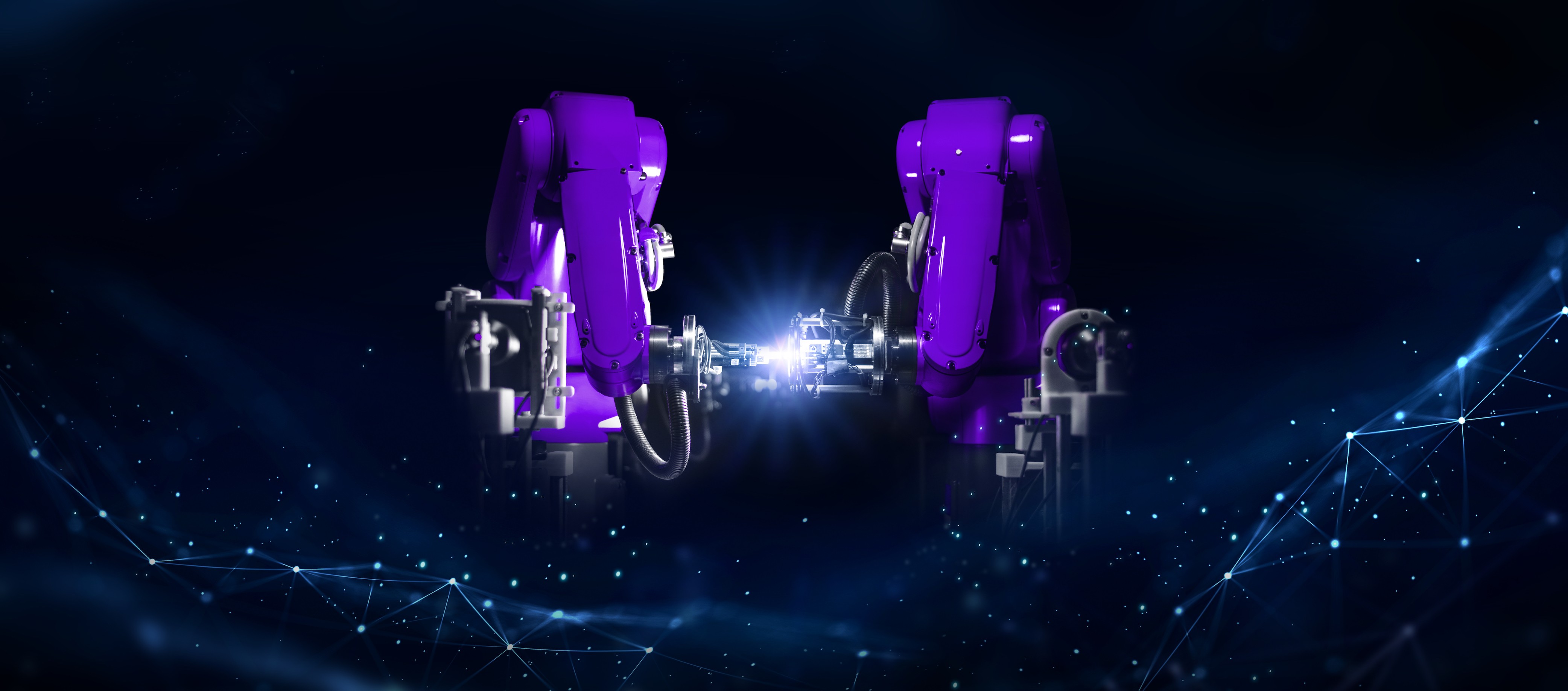
A Look at UnitX's Journey to $6.1B in Inspections
"UnitX has scaled to 820+ systems across 135 factories, inspecting $6.1B of products each year. Here’s how the team is transforming manufacturing with Robotics 2.0."
Welcome to the first edition of Robot Rundown’s Founders Spotlight, a series dedicated to showcasing the innovators shaping the future of robotics.
Today, we're featuring UnitX, a company that's gone from just a handful of images to inspecting billions of dollars in products.
Back in 2018, Keven Wang saw a massive gap in manufacturing quality control — slow, costly, and inconsistent inspections.
His answer? Build a robotics company that fuses AI, optics, and edge hardware to accelerate human productivity.
Numbers: Today, UnitX has 820+ systems running in 135+ factories worldwide, inspecting $6.1B of product annually.
Products: UnitX makes money from AI inspection platforms, software licenses, and service subscriptions.
Their lineup includes FleX, an AI-powered inline inspection system that deploys in under a week, and GenX, a generative AI tool that can train defect detectors from as few as three images.
Paired with software-defined imaging system, core AI brand and edge computing devices, these systems catch defects faster, with higher accuracy, and at massive scale.
Coolest milestone: Using their GenX system, with just 3 images, GenX will synthetic defect images. This will enhance the AI models training efficiency and enhance detection accuracy. It deployed at a Tier-1 EV battery line — slashing defect “escapes” by 9X.
What’s next: The Global FleX/GenX rollout with top-tier unicorn brands and systems integrator partners across automotive, EV, and electronics.
The next 12 months are all about scaling worldwide.
Funding: UnitX has raised $59M to date — enough to put them in the upper tier of industrial AI players.
Most misunderstood: “We’re not just software—we’re a Robotics 2.0 company integrating AI, imaging system, and edge hardware”
Founder tip: “Design for deployment speed and reliability, prove ROI fast, and productize serviceability from day one.”
The robotics company is quietly positioning itself to redefine factory floors worldwide — and if they execute, this could be the kind of infrastructure play that’s hard to dislodge.
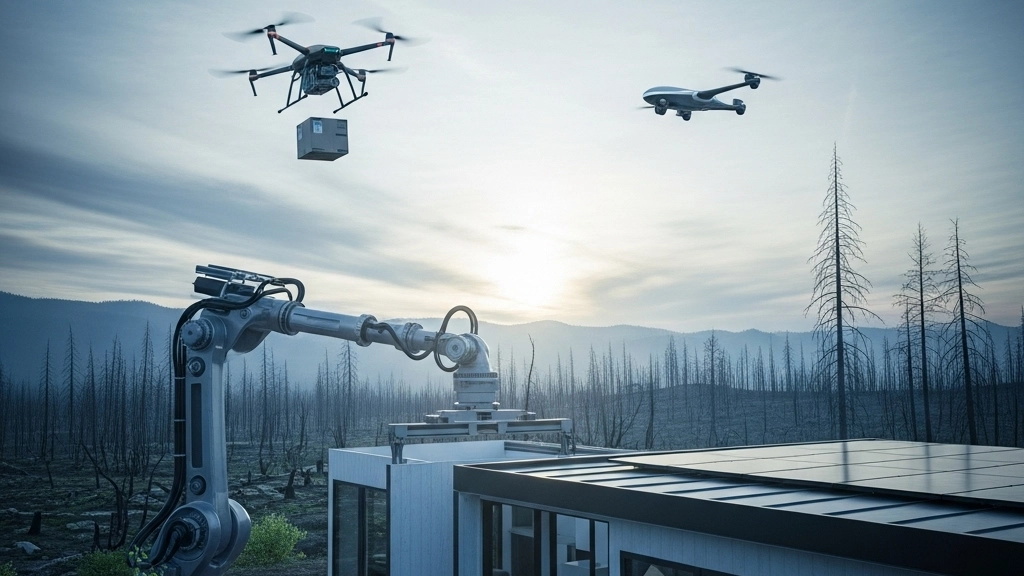
NVIDIA’s New Robotics Tools, Mobile Microfactories, and a Big Win for Drone Operations
NVIDIA is supercharging robot development with new Omniverse libraries, physics-accurate AI models, and scalable compute to speed simulation and deployment. In Los Angeles, Cosmic Buildings and ABB Robotics are bringing mobile microfactories to wildfire zones, producing modular homes on-site. Huntington Beach PD is adding drones for policing and search-and-rescue, while Flytrex just scored FAA approval for nationwide BVLOS deliveries—paving the way for large-scale, cost-effective drone logistics.
TL;DR
NVIDIA is supercharging robot development with new Omniverse libraries, physics-accurate AI models, and scalable compute to speed simulation and deployment. In Los Angeles, Cosmic Buildings and ABB Robotics are bringing mobile microfactories to wildfire zones, producing modular homes on-site. Huntington Beach PD is adding drones for policing and search-and-rescue, while Flytrex just scored FAA approval for nationwide BVLOS deliveries—paving the way for large-scale, cost-effective drone logistics.
NVIDIA Opens Portals to World of Robotics With New Omniverse Libraries, COSMOS Physical AI Models, and AI Computing Infrastructure
NVIDIA has unveiled a suite of new robotics tools, including expanded Omniverse libraries, COSMOS physical AI models, and upgraded AI computing infrastructure to accelerate robot design, simulation, and deployment. The Omniverse updates add richer digital twin capabilities, while COSMOS delivers physics-accurate models for more realistic AI training. NVIDIA is also scaling its cloud-based compute offerings to handle increasingly complex simulations, aiming to reduce development time from months to weeks. These advancements target a wide range of sectors—from manufacturing to logistics—by enabling more capable and adaptable robots.
Major Takeaway: NVIDIA’s latest toolkit blends realistic physics, powerful simulation, and scalable compute, giving robotics developers the means to build smarter, more capable machines faster than ever. Read More
Cosmic Buildings uses ABB Robotics to create robotic microfactories for rebuilding after Los Angeles wildfires
Construction startup Cosmic Buildings is teaming up with ABB Robotics to deploy mobile microfactories that can rapidly produce modular housing components in areas devastated by wildfires around Los Angeles. These container-sized facilities house robotic arms capable of fabricating walls, floors, and other structural elements on-site, cutting transportation needs and speeding up rebuilding. The system is designed to be scalable and relocatable, enabling fast response to disaster zones and reducing reliance on centralized factories. Cosmic aims to use the approach to deliver affordable, sustainable housing more quickly in both emergency and long-term projects.
Major Takeaway: By combining mobile microfactories with robotic automation, Cosmic and ABB are rethinking how to rebuild communities—bringing manufacturing to the disaster site instead of the other way around. Read More
Huntington Beach Adds Drones To Police Force
The Huntington Beach Police Department is expanding its aerial capabilities by adding drones to its toolkit for crime prevention and emergency response. The drones will be used for tasks such as monitoring large events, aiding in search-and-rescue operations, and providing real-time aerial perspectives during active incidents. Equipped with high-resolution cameras and thermal imaging, they can operate day or night and relay critical information to officers on the ground. Police officials emphasize that the program will follow privacy guidelines and aim to enhance public safety without replacing human officers.
Major Takeaway: Huntington Beach is joining a growing list of cities adopting drones for policing, highlighting how aerial robotics are becoming a standard tool for faster, safer, and more informed law enforcement. Read More
Flytrex approved by FAA for nationwide BVLOS drone delivery
Flytrex has received Federal Aviation Administration (FAA) approval to conduct nationwide drone deliveries beyond the visual line of sight (BVLOS), a milestone that removes one of the biggest regulatory barriers for large-scale operations. The Israeli startup already delivers food and retail goods in several U.S. cities, and this new clearance will allow it to expand to more regions without the need for visual observers. Flytrex says BVLOS capability will make drone delivery more cost-effective and scalable, potentially transforming last-mile logistics for suburban and rural areas.
Major Takeaway: With BVLOS approval, Flytrex is poised to take drone delivery mainstream—unlocking broader coverage, lower costs, and faster service across the U.S. Read More
About Lucid Bots
Founded in 2018, Lucid Bots is an AI robotics company that is committed to uplifting humanity by building the world's most productive and responsible robots that can do dangerous and demanding tasks. Headquartered in Charlotte, the company engineers, manufactures, and supports its products domestically, which include the Sherpa, a cleaning drone, and the Lavo Bot, a pressure-washing robot. Lucid Bots' products are elevating safety and efficiency for a growing number of customers around the world. Lucid is a Y Combinator-backed company, with investments from Cubit Capital, Idea Fund Partners, Danu Ventures, and others. Lucid Bots was recently recognized as the fastest growing robotics manufacturer in the United States.
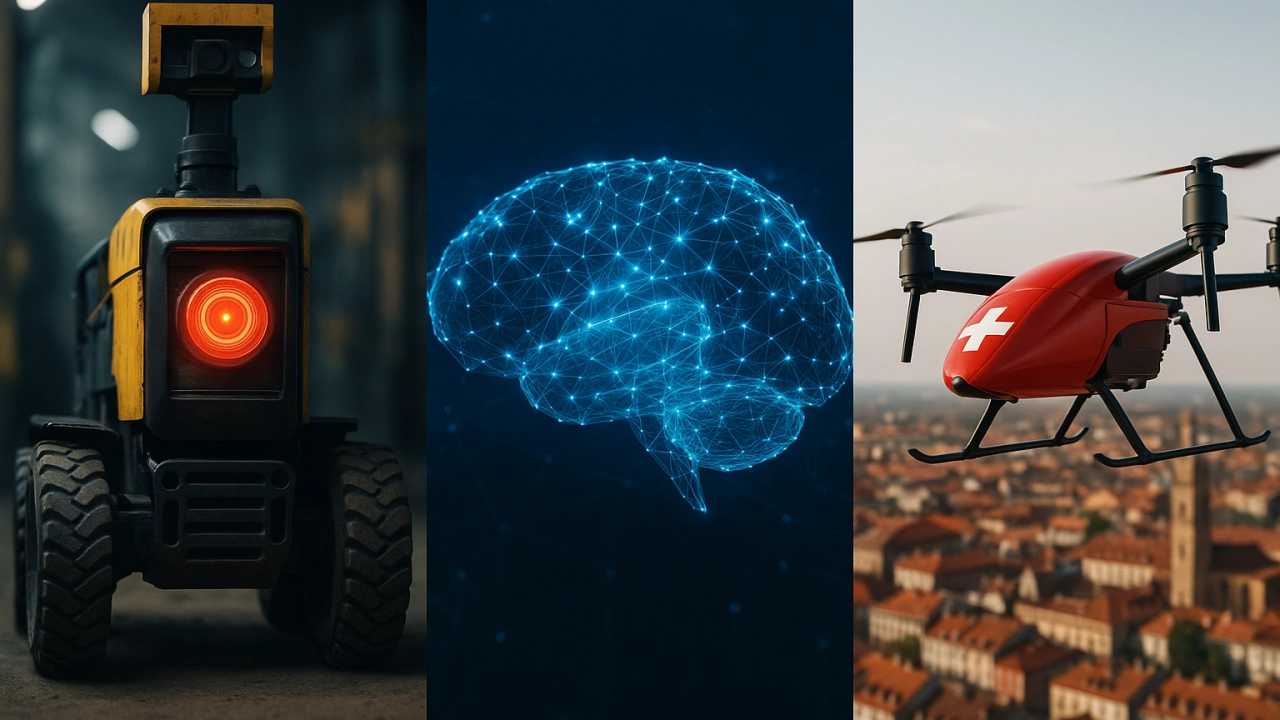
Safety, Smarts, and Speed in the Sky
This week, FORT Robotics raised $18.9 million to scale safety for autonomous systems, the FAA unveiled its long-awaited Part 108 BVLOS proposed rule, and Belgium launched a medical drone delivery trial to improve healthcare response.
TL;DR
This week, FORT Robotics raised $18.9 million to scale safety for autonomous systems, the FAA unveiled its long-awaited Part 108 BVLOS proposed rule, and Belgium launched a medical drone delivery trial to improve healthcare response.
FORT Robotics adds $18.9M in Series B funding for robotic safety
FORT Robotics has secured $18.9 million in Series B funding to expand its platform for securing and controlling autonomous machines across industries like construction, manufacturing, and logistics. The company specializes in safety-critical communication—ensuring that robots, vehicles, and other autonomous systems can be reliably stopped or reprogrammed in real time to prevent accidents. Their wireless safety controllers and “machine trust” platform are designed to work with a wide range of equipment, protecting both operators and infrastructure. With the new funding, FORT plans to scale its engineering teams, enhance its cloud capabilities, and expand global deployments.
Major Takeaway: As robots move into more dangerous and dynamic environments, trust and safety become non-negotiable. FORT’s tech tackles one of the biggest barriers to autonomy: ensuring machines can be instantly controlled when it matters most. Read More
FAA Publishes Part 108 Proposal for BVLOS Drone Operations
The FAA has released its long-awaited Part 108 proposal, creating a clear framework for routine beyond visual line of sight (BVLOS) drone flights without case-by-case waivers. The rule shifts accountability from individual pilots to companies, introduces two authorization paths—permits for lower-risk missions and certificates for complex or high-density operations—and requires roles like Operations Supervisor and Flight Coordinator. It also mandates manufacturer-defined performance limits, detect-and-avoid tech in controlled airspace, and strict security and rest standards.
Major Takeaway: Part 108 moves BVLOS from experimental to scalable, enabling broader commercial drone use while setting high bars for safety, autonomy, and corporate responsibility. Read More
Medical drone delivery trials launched in Kempen, Belgium
Belgium has launched a pilot program in the Kempen region to test medical drone deliveries between hospitals, pharmacies, and laboratories. The initiative, backed by the European Union and several healthcare and aviation partners, aims to speed up the transport of critical supplies like blood samples, medication, and medical equipment. The drones will follow designated flight corridors and are equipped with safety features to operate in populated areas while meeting strict European airspace regulations. If successful, the program could be expanded nationwide to improve healthcare logistics and emergency response times.
Major Takeaway: By cutting transport times for vital medical supplies, Belgium’s drone delivery trials could make healthcare faster, more efficient, and better prepared for emergencies. Read More
About Lucid Bots
Founded in 2018, Lucid Bots is an AI robotics company that is committed to uplifting humanity by building the world's most productive and responsible robots that can do dangerous and demanding tasks. Headquartered in Charlotte, the company engineers, manufactures, and supports its products domestically, which include the Sherpa, a cleaning drone, and the Lavo Bot, a pressure-washing robot. Lucid Bots' products are elevating safety and efficiency for a growing number of customers around the world. Lucid is a Y Combinator-backed company, with investments from Cubit Capital, Idea Fund Partners, Danu Ventures, and others. Lucid Bots was recently recognized as the fastest growing robotics manufacturer in the United States.
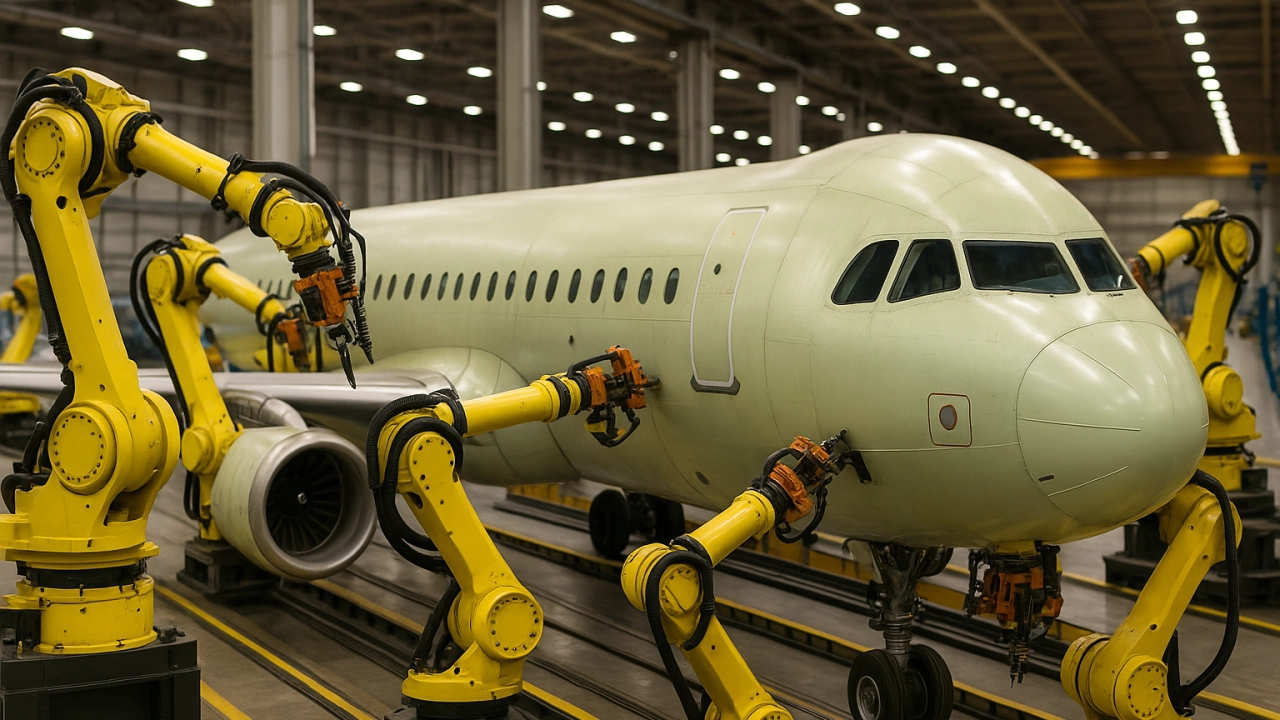
Funding Flows Where Robots Show
Robotics funding is rebounding in 2025 as investors double down on AI-powered platforms like Raise Robotics and swarm-based aerospace systems that prove real-world utility beyond the lab.
TL;DR:
Robotics funding is rebounding in 2025 as investors double down on AI-powered platforms like Raise Robotics and swarm-based aerospace systems that prove real-world utility beyond the lab.
Startup Funding For Robotics Rises In 2025
After a slower period in 2023, global investment in robotics startups is picking up momentum, reaching $4.2 billion in the first half of 2025, marking a 10% year-over-year increase. This resurgence is largely fueled by a growing demand for AI-enabled robots capable of learning from data and adapting to complex tasks. Key sectors attracting this investment include logistics, manufacturing, and construction. Prominent companies like Apptronik (known for general-purpose humanoids), Figure (specializing in warehouse automation), and Covariant (focusing on AI for robot arms) are securing substantial funding rounds. This trend is supported by advancements in foundation models and increasing commercial interest in these technologies. However, analysts caution that the sector remains susceptible to economic challenges, and sustained growth will depend on successful real-world deployments and demonstrated customer return on investment (ROI).
Major Takeaway: Robotics funding is on an upward trend in 2025, particularly for ventures that combine AI and automation, with success largely determined by their proven practical utility rather than just impressive demonstrations. Read More
Raise Robotics Nets $7.75M in Seed Funding to Build Out Multipurpose Robot Platform
Raise Robotics has successfully secured $7.75 million in seed funding. This capital will accelerate the development of its multipurpose robot platform, which is designed to automate high-risk tasks on construction sites. Their initial focus is on steel connection fastening, one of construction's riskiest jobs. The system features a robotic arm mounted on a mobile base, equipped with sensors and computer vision capabilities, enabling it to adapt to the inherent variability of real-world job sites. This allows the robot to perform tasks such as bolting or inspecting structural connections. The platform also streamlines documentation processes in real-time by integrating with tools like Procore. With initial deployments already underway, Raise Robotics plans to scale its operations through a robot-as-a-service model, which permits contractors to lease units without incurring significant upfront costs.
Major Takeaway: Raise Robotics is directly addressing labor safety and efficiency challenges in the construction industry with versatile robots built to navigate the complexities of real-world construction environments. Their subscription-based model has the potential to facilitate the adoption of automation in an industry that has historically been resistant to such changes. Read More
Swarm Robotics Could Spell the End of the Aerospace Assembly Line
A novel approach to aerospace manufacturing is emerging, moving away from traditional conveyor belts towards swarms of small, collaborative robots. Researchers at institutions like the University of Groningen and other European entities are actively developing these collaborative robot swarms. These swarms are designed to work in unison to construct large aircraft structures, entirely without the need for traditional fixed tooling or conventional assembly lines. The robots are engineered to communicate, self-organize, and intelligently divide tasks such as drilling and fastening across an aircraft fuselage. The ultimate objective is to establish a more flexible and scalable production system that can readily adapt to new designs or part configurations without requiring costly retooling.
Major Takeaway: Swarm robotics has the potential to replace rigid aerospace assembly lines with decentralized, dynamic manufacturing teams, representing a significant stride towards more adaptive, software-defined factories. Read More
About Lucid Bots
Founded in 2018, Lucid Bots is an AI robotics company that is committed to uplifting humanity by building the world's most productive and responsible robots that can do dangerous and demanding tasks. Headquartered in Charlotte, the company engineers, manufactures, and supports its products domestically, which include the Sherpa, a cleaning drone, and the Lavo Bot, a pressure-washing robot. Lucid Bots' products are elevating safety and efficiency for a growing number of customers around the world. Lucid is a Y Combinator-backed company, with investments from Cubit Capital, Idea Fund Partners, Danu Ventures, and others. Lucid Bots was recently recognized as the fastest growing robotics manufacturer in the United States.
.webp)
Sporks of AGI, Student Bots, and Tesla’s Big Bet
AI researchers say today’s models are early signs of general intelligence, students in DC are learning robotics through hands-on summer camps, and Elon Musk is focusing Tesla’s future on robotaxis and humanoid robots.
TL;DR
AI researchers say today’s models are early signs of general intelligence, students in DC are learning robotics through hands-on summer camps, and Elon Musk is focusing Tesla’s future on robotaxis and humanoid robots.
AI Researcher Says We’re Already Using “Sporks” of AGI
In his recent essay, Sergey Levine likens today’s AI models to sporks—blending narrow and general intelligence. They're flexible, adaptable, and kind of general. But they still need structure. Still need supervision. Still need humans.
That’s the gap between AGI theory and real-world robotics: abstraction vs. application.
If you want systems that can actually do work—on a roof, on a bridge, on a building—you need data from those real-world environments. Not lab environments. Not synthetic ones. The real thing.
Major Takeaway: Real-world robotics advances by doing, not theorizing—data from real jobs is the compounding edge that turns flexible tools into truly capable systems. Read More
At this summer camp, kids build soccer-playing, relay-racing robots
DC Public Schools hosted a free robotics summer camp where middle schoolers spent three weeks building and programming robots for a “Robot Olympics,” featuring events like robot soccer and cube sorting. The camp emphasizes hands-on learning, creativity, and fun—without grades or pressure—making it an inviting entry point into STEM. Students get meals, mentorship, and field trips, and even city leaders like Mayor Muriel Bowser stopped by to show support. The program is part of a broader effort to expand access to CTE and STEAM education citywide.
Major Takeaway: DC’s free robotics camps are giving students early access to engineering and coding skills in a supportive, low-stress environment—setting the stage for a more inclusive future in tech. Read More
Elon Musk Tells Tesla Investors to Focus on a Future Filled With Robots
Tesla’s Q2 numbers showed a sharp drop in EV sales and profits, prompting Elon Musk to shift investor attention toward the company’s future in robotics and autonomous vehicles. Musk unveiled a pilot robotaxi program in Austin using human-supervised Model Ys, with plans to scale rapidly across U.S. cities pending regulatory approval. He also claimed Tesla will be building 100,000 Optimus humanoid robots per month within five years. Still, analysts remain skeptical, citing competition from Waymo, technical hurdles, and Tesla’s reliance on vision-only autonomy.
Major Takeaway: Tesla is betting its future on robotaxis and humanoid robots, but delivering on that promise will require overcoming major technical, regulatory, and competitive challenges. Read More
About Lucid Bots:
Founded in 2018, Lucid Bots is an AI robotics company that is committed to uplifting humanity by building the world's most productive and responsible robots that can do dangerous and demanding tasks. Headquartered in Charlotte, the company engineers, manufactures, and supports its products domestically, which include the Sherpa, a cleaning drone, and the Lavo Bot, a pressure-washing robot. Lucid Bots' products are elevating safety and efficiency for a growing number of customers around the world. Lucid is a Y Combinator-backed company, with investments from Cubit Capital, Idea Fund Partners, Danu Ventures, and others. Lucid Bots was recently recognized as the fastest growing robotics manufacturer in the United States.
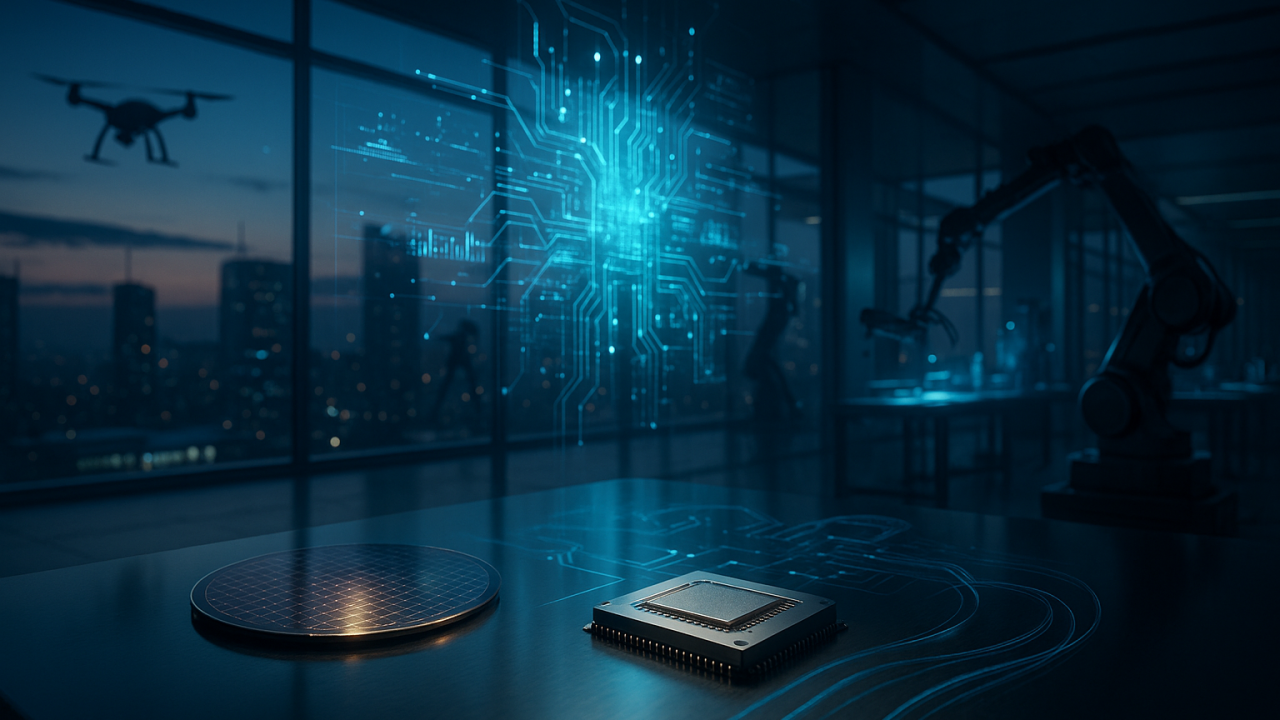
From R&D to ROI: Robots Go to Work
Robots transition from R&D to real-world applications, improving efficiency in industries like automotive manufacturing and developer tools. Discover how automation is transforming the future.
TL;DR
Robots are moving from R&D labs to the real world. Dongfeng is using humanoids on its car assembly line. Nvidia is all-in on humanoids and AVs as the next big wave. And Google just gave developers a powerful AI sidekick with Gemini CLI. The future of automation is unfolding right now — and it's getting more capable by the day.
Humanoid robots handle quality checks, assembly at auto plant in China
Chinese automaker Dongfeng Motor has deployed humanoid robots developed by UBTech on its assembly lines to handle tasks such as checking seatbelts, inspecting doors, filling oil, and applying labels. These robots, called Walker S, are equipped with high-resolution sensors and dexterous hands, enabling them to perform precision quality assurance. This move reflects a growing trend in China to use robotics to address labor shortages and improve manufacturing efficiency.
Major takeaway: Humanoid robots are no longer experimental—they’re now performing real work on factory floors, signaling a significant shift in how industries address labor challenges and scale production. Read more
Nvidia CEO says robotics is chipmaker’s biggest opportunity after AI
At Nvidia’s 2025 shareholder meeting, CEO Jensen Huang spotlighted robotics—particularly humanoid robots and autonomous vehicles—as the company’s next major frontier after AI. He introduced Isaac GR00T N1, a new open-source foundation model built to accelerate humanoid robot development. Companies like Neura Robotics and 1X Technologies are already leveraging this tool, pointing to its real-world potential in speeding up innovation.
Major takeaway: Nvidia is staking its future beyond AI on robotics, with humanoid robots and autonomous vehicles at the heart of its vision for what’s next. Read more
Introducing Gemini CLI: Your open-source AI agent
Google has introduced Gemini CLI, an open-source AI tool that brings advanced Gemini capabilities directly to the developer terminal. Built on the Gemini 2.5 Pro model, it supports a massive 1 million token context window for tasks like writing code, debugging, generating content, and conducting deep research. It also integrates with services like Gemini Code Assist, Google Search, and image/video generation tools (Veo and Imagen). Available in preview, developers can access it for free with generous usage limits.
Major takeaway: Gemini CLI delivers powerful AI tools straight to the command line, transforming how developers build, research, and create at scale. Read more
About Lucid Bots:
Founded in 2018, Lucid Bots is an AI robotics company that is committed to uplifting humanity by building the world's most productive and responsible robots that can do dangerous and demanding tasks. Headquartered in Charlotte, the company engineers, manufactures, and supports its products domestically, which include the Sherpa, a cleaning drone, and the Lavo Bot, a pressure-washing robot. Lucid Bots' products are elevating safety and efficiency for a growing number of customers around the world. Lucid is a Y Combinator-backed company, with investments from Cubit Capital, Idea Fund Partners, Danu Ventures, and others. Lucid Bots was recently recognized as the fastest growing robotics manufacturer in the United States.
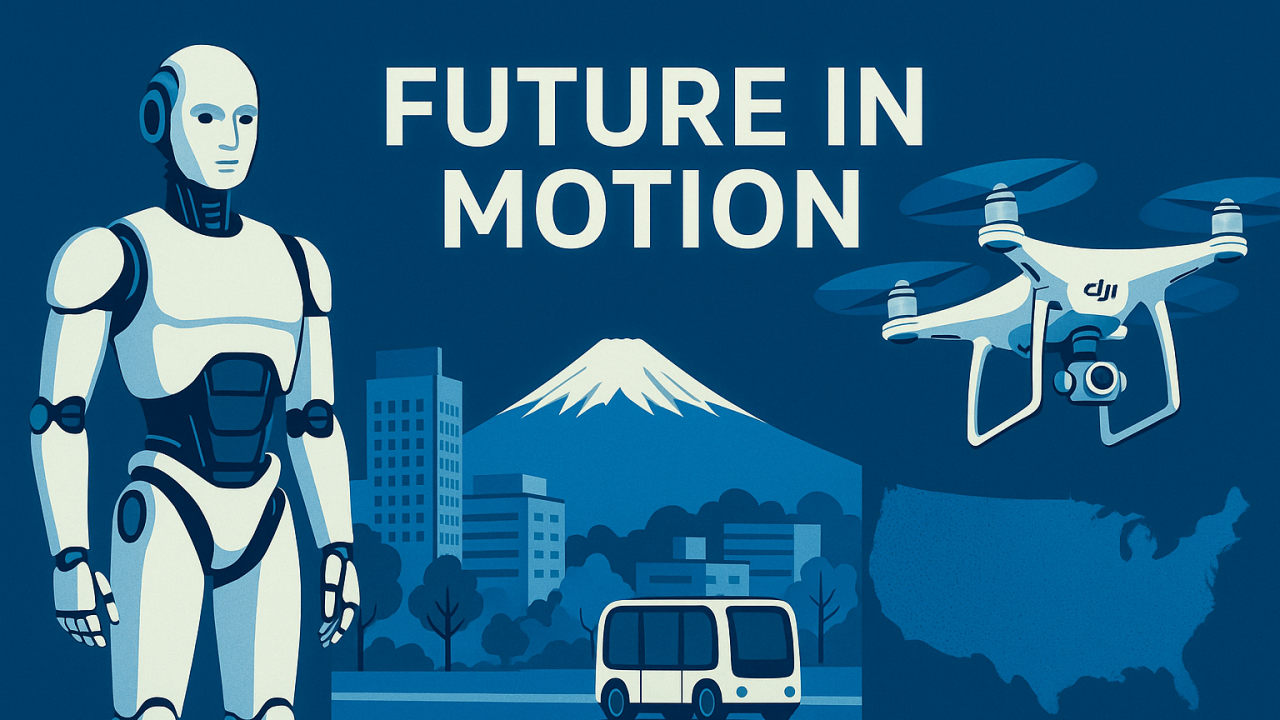
Land Legs, Living Labs, Open Skies: The New Age of Robots Arrives
The robotics revolution is advancing rapidly with South Korea, Toyota, and the U.S. leading innovations on land, in cities, and in the skies.
TL;DR
Chaebol-backed Korea is racing to perfect humanoids, Toyota is turning Mt. Fuji into a living smart-city lab, and new U.S. rules are clearing the skies for home-grown drones—all signs that the robotics revolution is sprinting ahead on land, in cities, and in the air.
How South Korea’s Chaebols Are Pushing The Robotics Revolution
Major Takeaway: South Korea is positioning itself as a global leader in robotics through a powerful alliance between government, academia, and industrial giants.
Summary: South Korea is launching an ambitious national campaign to become a global leader in robotics, fueled by its most powerful conglomerates—Samsung, Hyundai, LG, and more. These companies are making strategic investments in humanoid robotics startups like Rainbow Robotics and collaborating through the newly formed K-Humanoid Alliance. This coalition aims to develop advanced humanoid robots by 2028 that can walk, lift, and operate autonomously across a range of environments. The effort reflects a highly coordinated industrial strategy backed by public-private synergy to dominate the robotics future.
Why It Matters: This is a rare example of a country aligning its corporate and public sectors to win a technological arms race. The level of coordination and capital behind it could set a blueprint for robotics leadership.
Toyota set to launch world’s first robot city at Japan’s Mount Fuji base in 2025
Major Takeaway: Toyota is transforming into a tech-first mobility company by building a smart city to test and scale future technologies in real-world conditions.
Short Summary: Toyota is building Woven City, a 175-acre experimental smart city at the base of Mount Fuji, set to launch in 2025. This “living laboratory” will house real residents—including Toyota engineers—who will live among autonomous vehicles, AI-powered homes, and sustainable energy systems like hydrogen fuel cells. By embedding cutting-edge technologies into everyday life, Woven City offers a bold reimagining of urban living and innovation at scale. It’s not just a testbed for products—it’s a fully functioning urban prototype for the mobility-centric future Toyota envisions.
Why It Matters: Rather than simulate the future, Toyota is building it. Woven City represents a radical approach to innovation where the testing ground is life itself.
Drones will soon be everywhere, as U.S. seeks to lead future of aviation
Major Takeaway: The U.S. is removing major regulatory roadblocks to fast-track drone innovation and reduce reliance on Chinese drone tech.
Short Summary: In a significant policy shift, the United States is removing key regulatory barriers to expand the use of drones and advanced aerial vehicles across industries. President Trump’s executive orders aim to legalize long-distance drone operations beyond visual line of sight (BVLOS), accelerate delivery services, and enable the commercial rollout of eVTOL aircraft. These moves are also designed to reduce U.S. reliance on dominant Chinese manufacturers like DJI. With new FAA rules expected soon, the initiative is poised to unlock innovation in logistics, aviation, public safety, and more.
Why It Matters: This shift will supercharge American drone startups and logistics companies, while reshaping urban air mobility and national security frameworks.
About Lucid Bots:
Founded in 2018, Lucid Bots is an AI robotics company that is committed to uplifting humanity by building the world's most productive and responsible robots that can do dangerous and demanding tasks. Headquartered in Charlotte, the company engineers, manufactures, and supports its products domestically, which include the Sherpa, a cleaning drone, and the Lavo Bot, a pressure-washing robot. Lucid Bots' products are elevating safety and efficiency for a growing number of customers around the world. Lucid is a Y Combinator-backed company, with investments from Cubit Capital, Idea Fund Partners, Danu Ventures, and others. Lucid Bots was recently recognized as the fastest growing robotics manufacturer in the United States.

Flying Food, Warehouse Workhorses, and Humanoids on the Job: This Week’s Robotics Revolution
Latest advancements in robotics: humanoid robots, drone deliveries, warehouse automation, and autonomous plant inspections revolutionize industries. Discover how tech is transforming everyday tasks.
TL;DR
This week in robotics: AEON, a full-stack AI humanoid trained in simulation, is stepping into the real world; DoorDash's drones are now dropping off lunch in Charlotte; Gap is arming its largest distribution center with Boston Dynamics bots to unload trucks; and Yokogawa and Shell are teaming up to make plant inspections fully autonomous with robots and computer vision.
Hexagon Robotics Unveils AEON, AI-Powered Humanoid Robot at Scale
Hexagon Robotics has unveiled AEON, a humanoid robot designed for industrial use, powered by NVIDIA’s full-stack AI and robotics platform. AEON performs tasks like asset inspection, part manipulation, and 3D reality capture across sectors including manufacturing and logistics. It’s trained using NVIDIA’s foundation models (like Isaac GR00T) and simulations in Omniverse, allowing it to learn complex skills in weeks instead of months. With advanced sensors and onboard AI, AEON captures spatial data in real time and feeds it back to Hexagon’s HxDR platform for collaborative analysis. Currently in pilot programs with Schaeffler and Pilatus, AEON is targeting deployment within six months.
Major Takeaway: AEON shows how combining simulation training and edge AI can make humanoid robots deployable in real-world industries faster than ever. Read more
DoorDash and Wing Expand Drone Delivery to Charlotte, North Carolina
DoorDash has launched drone delivery in Charlotte through its partnership with Wing, offering residents within a four‑mile radius of The Arboretum Shopping Center access to orders from local favorites like Curry Junction, Matcha Café Maiko, Joa Korean Food—and national partner Panera Bread—delivered within approximately 15–30 minutes by autonomous drones that hover and lower packages via tether. DashMart essentials and special bundles are also available. This expansion builds on pilots in Australia, Virginia, and Dallas–Fort Worth, and leverages North Carolina’s drone-friendly policies ahead of a broader U.S. rollout.
Major Takeaway: Food and retail delivery are going airborne, and DoorDash is one of the first to scale real, working drone logistics in American neighborhoods. Read more
Gap Pours $58 Million into Robotics Automation at Tennessee Distribution Hub
Gap Inc. is investing $58 million to bring robotics and automation to its 1.4 million sq ft distribution center in Gallatin, Tennessee, deploying multiple Boston Dynamics Stretch mobile robots to unload trailers. These bots use advanced vision and vacuum grippers, moving autonomously and syncing wirelessly with conveyor belts. The upgrade has already reduced injuries, boosted morale, and sped up operations—transitioning staff from hard manual labor to managing robot fleets with minimal setup time.
Major Takeaway: Boston Dynamics' warehouse bots are becoming everyday coworkers—offloading boxes and injuries alike. Read more
Yokogawa Collaborates with Shell on Robotics and AI Technology for Plant Maintenance
Yokogawa Electric has partnered with Shell Global Solutions to integrate Shell’s AI-powered “Operator Round by Exception” (ORE) into Yokogawa’s OpreX Robot Management Core. This means robots and drones can autonomously inspect industrial plants—reading gauges, detecting gas leaks, and identifying issues while integrating with existing safety systems. Initial trials at two Shell facilities aim to prove that plants can one day be inspected—and maybe maintained—entirely by autonomous machines.
Major Takeaway: Shell and Yokogawa are betting on a future where robots do the dirty (and dangerous) work of industrial inspections. Read more
About Lucid Bots:
Founded in 2018, Lucid Bots is an AI robotics company that is committed to uplifting humanity by building the world's most productive and responsible robots that can do dangerous and demanding tasks. Headquartered in Charlotte, the company engineers, manufactures, and supports its products domestically, which include the Sherpa, a cleaning drone, and the Lavo Bot, a pressure-washing robot. Lucid Bots' products are elevating safety and efficiency for a growing number of customers around the world. Lucid is a Y Combinator-backed company, with investments from Cubit Capital, Idea Fund Partners, Danu Ventures, and others. Lucid Bots was recently recognized as the fastest growing robotics manufacturer in the United States.
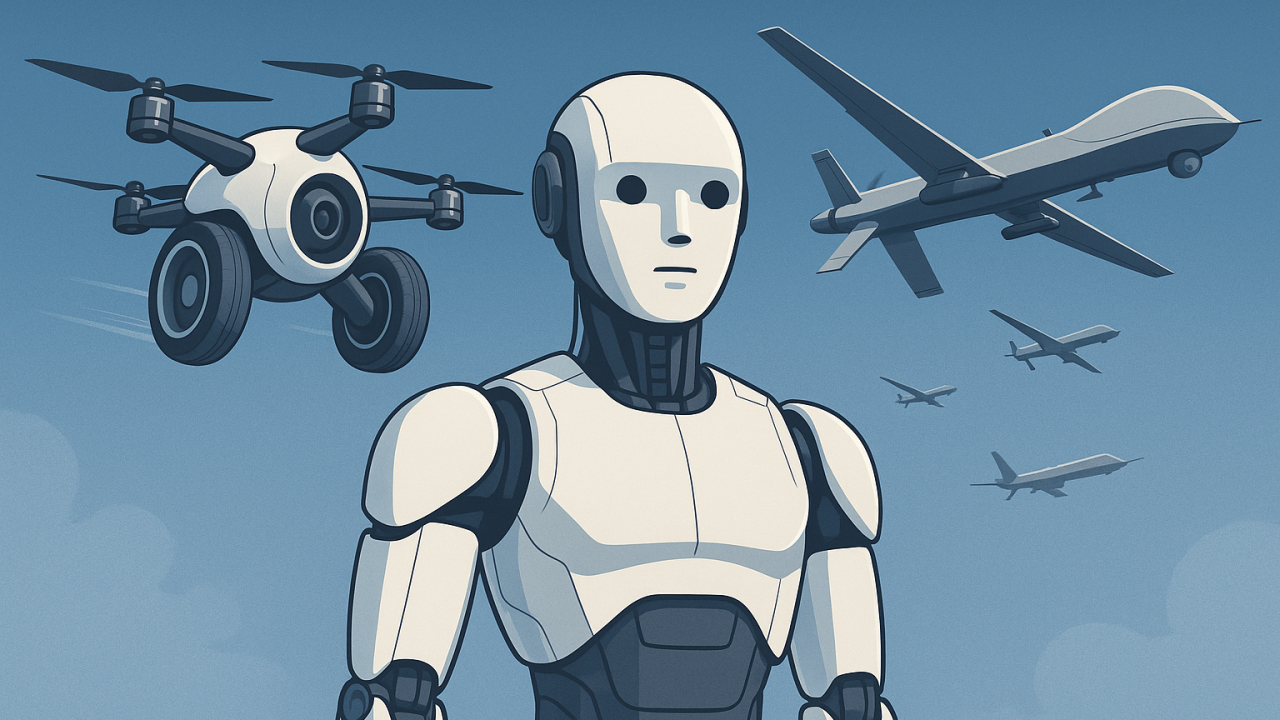
Smarter, Swifter, and Open to All
Robots get smarter and more versatile with new morphing drones, open-source humanoids, and military drone swarms shaping the future of robotics.
TL;DR
From morphing drones and open-source humanoids to scalable military swarms, this week’s breakthroughs show that robots are becoming more adaptable, affordable, and accessible than ever.
Flying robot morphs in mid-air to land and roll on wheels
Major Takeaway: More versatile movement means more real-world applications. Atmo’s dual-mode design points to a future where robots are no longer limited by terrain or task.
Summary: A team from the University of Tokyo and Swiss robotics company Verity have developed Atmo, a compact robot that merges the functionality of a car and a drone. It uses four wheel-arms that can rotate to become quadcopter rotors, allowing it to drive, take off vertically, and fly through the air. More impressively, it can dynamically reconfigure its arm positions mid-flight—optimizing for speed, agility, and stability.
Atmo is built with a lightweight carbon fiber frame and 3D-printed parts, clocking in at just 1.6 kg. It navigates using an onboard camera and processor, making it fully autonomous. This type of robotic mobility isn't just a neat party trick—it's designed for tight, obstacle-filled environments that neither traditional ground bots nor standard drones can easily traverse.
Why it matters: Robots are becoming significantly more versatile in how they move, which dramatically expands where they can operate—and what they can do. Morphing mobility allows a single robot to serve in varied environments: flying over rubble, driving under low-hanging obstacles, or weaving through complex indoor spaces. The more adaptive their movement, the broader their utility across logistics, disaster response, infrastructure inspection, and beyond.
Hugging Face unveils two new humanoid robots
Major Takeaway: Hugging Face is turning humanoid robots into open platforms—bringing the power of collaborative development to embodied AI.
Summary: Hugging Face, the AI company behind popular open-source language models, is entering the robotics space with two humanoids: Leonardo and Shelly. Instead of building the hardware, they’ve partnered with 1X and AgileX to focus on the software layer—using natural language processing and reinforcement learning to make these bots smarter over time. The aim? A developer ecosystem for robots, much like Android for phones.
Why it matters: By open-sourcing the brains of humanoid robots, Hugging Face could dramatically accelerate innovation and accessibility in the space. It shifts robotics from a lab-bound industry to one shaped by global contributors.
US Military is trading tanks in for drones
Major Takeaway: Drones are the future of warfare—more adaptable, scalable, and cost-effective than traditional military hardware.
Summary: Through its Replicator initiative, the U.S. military is moving away from heavy tanks and toward swarms of cheap, autonomous drones. These unmanned systems can be deployed quickly, modified easily, and replaced without breaking the bank. From surveillance to electronic warfare and strike capabilities, drones are proving to be more tactically flexible than legacy equipment.
Why it matters: This marks a major doctrinal shift in military strategy. Instead of a few expensive machines, the future battlefield will be dominated by fleets of intelligent, disposable drones—offering a tech-first edge in both cost and capability.
About Lucid Bots:
Founded in 2018, Lucid Bots is an AI robotics company that is committed to uplifting humanity by building the world's most productive and responsible robots that can do dangerous and demanding tasks. Headquartered in Charlotte, the company engineers, manufactures, and supports its products domestically, which include the Sherpa, a cleaning drone, and the Lavo Bot, a pressure-washing robot. Lucid Bots' products are elevating safety and efficiency for a growing number of customers around the world. Lucid is a Y Combinator-backed company, with investments from Cubit Capital, Idea Fund Partners, Danu Ventures, and others. Lucid Bots was recently recognized as the fastest growing robotics manufacturer in the United States.
Lucid Bots Podcast
How Ryan Godwin is Transforming Exterior Cleaning with the Sherpa Drone
Dive into the future of exterior cleaning with Ryan Godwin, the visionary behind Lucid Bots. Discover how Ryan is leveraging cutting-edge robotics to revolutionize cleaning for buildings and outdoor surfaces—boosting efficiency, safety, and sustainability.

.png)
.svg)
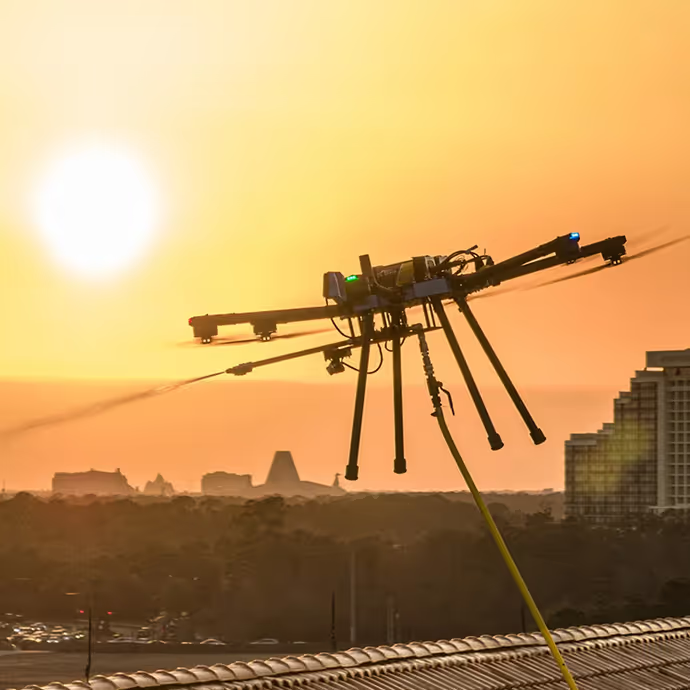

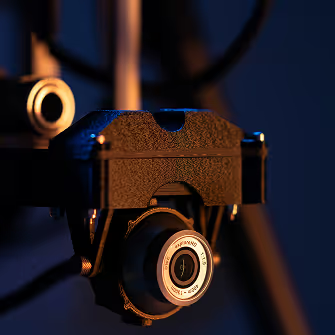

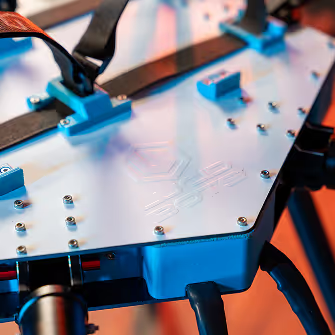
.avif)
.avif)
